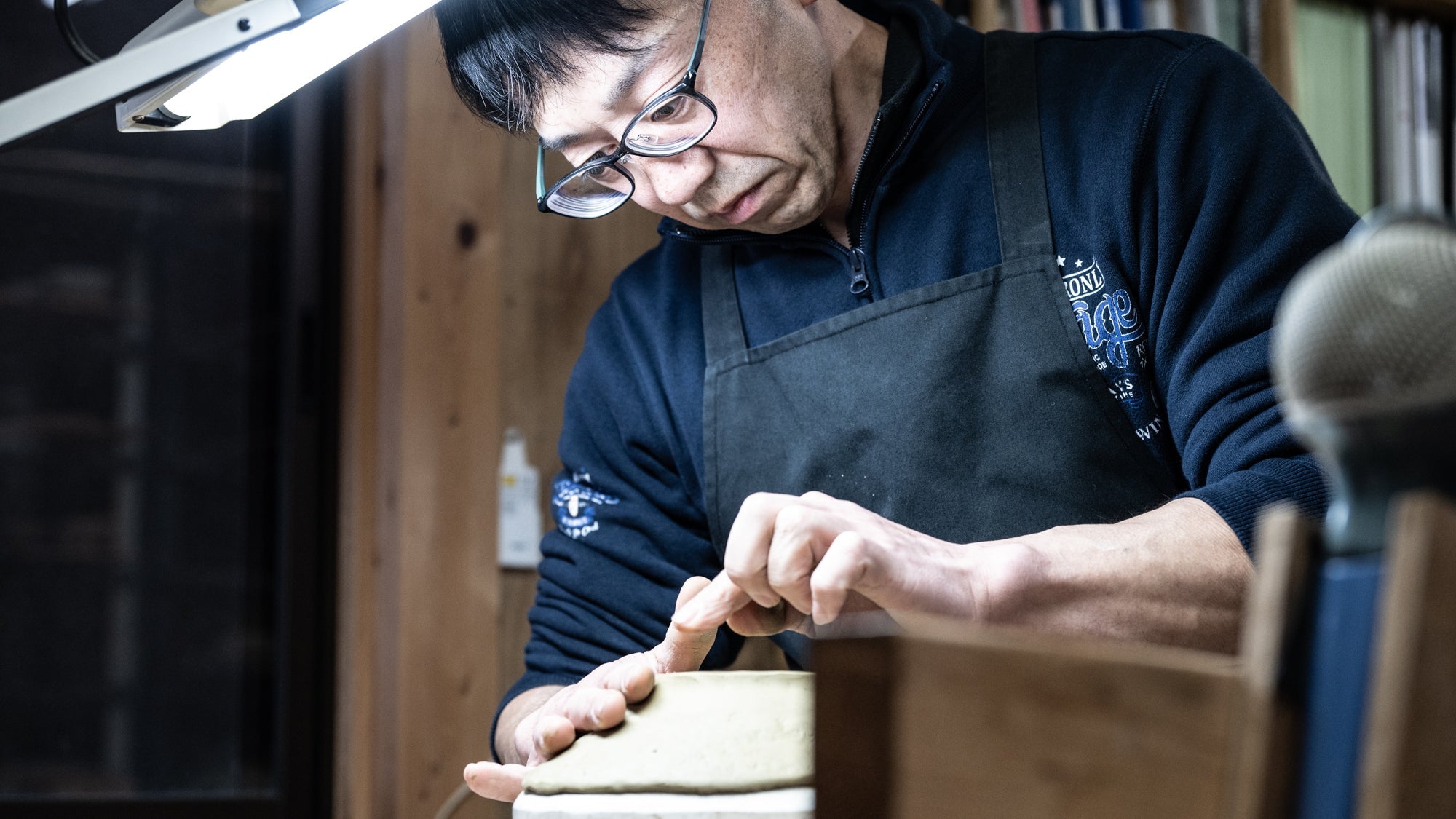
Tsujii Musashi: Crafting Earth's Bounty through Farming and Pottery
Written by Team MUSUBI
In January, Team Musubi traveled to the secluded Musashi Kiln located in Hiyoshi Town, Mizunami City, Gifu Prefecture. The main house and a relatively new workshop lie nestled amidst the mountains in a rural area at the end of a long drive along steep, winding roads.
Tsujii Musashi, an artisan who also cultivates his own farm, creates unique pottery while assisting with his wife’s agricultural endeavors. His works intentionally incorporate natural motifs such as camellias and wheat, reflecting the intimate connection between agriculture and pottery. Both are handiworks that demand time and meticulous care. Through farming, Tsujii experiences the rhythms of nature and the changing seasons, influences that are palpably expressed in the shapes, textures, and colors of his ceramics. His creations not only embody the beauty of nature but also offer moments of serene relaxation, as if one is enveloped by the tranquility of the natural world.
Table of Contents
The Path to Becoming an Artisan
Tsujii’s first encounter with the world of pottery was during his time at university, where he was part of the pottery club. At Tokyo Zokei University, he majored in three-dimensional design, such as furniture, and did not study pottery. Instead, he enjoyed working on pieces freely as part of his club activities.
His love for making things led him to a job in the food and beverage industry after graduating from university. After working for a few years, he thought that if he were to dedicate his life to something, it should be pottery. At that time, he didn't particularly aspire to be an artist but wanted to be involved in the pottery industry. He enrolled in the Ceramics department at the Nagoya Vocational Training Institute of Aichi Prefecture, where he spent a year learning about the ceramics industry, including such aspects as mass production techniques and kiln adjustments.

Of the many places across Japan famous for their pottery, his favorite at the time was Aichi Prefecture's Seto ware, and he was captivated by the color and variations of its glazes.
Upon graduating from pottery school, he worked at a mass-production ceramics company for a while. A friend of his, who aspired to be a ceramic artist and had found a job at a handmade pottery studio, told him that they were looking for short-term help. This piqued Tsujii’s interest and he inquired if he could study handcrafted pottery while working at the studio. There he began creating his own pieces and gradually selling them.
He initially established himself as an independent artisan in Gifu Prefecture’s Mizunami City on a small scale, but in 2016 relocated to the town of Hiyoshi.

Unique Artistic Style and Commitment


He also makes sure that his pottery is not too heavy by taking care to make his pieces as light as possible without significantly compromising their strength. The level of thinness achieved is a distinctive feature of using a potter's wheel, making his pieces lightweight and easy to hold. The warmth of the colors and shapes of his handcrafted pottery result in items that can be cherished for a long time.
Incorporating Agricultural Experience into Pottery


Designs Inspired by Nature


At this time, he has taken on new challenges, such as devising new motifs and increasing his currently limited variety of shapes, by making ones he has never made before. He also wishes to create a lineup of pieces that are of the same shape but different designs, offering his customers even further variations to choose from.
While he is influenced by regional traditional techniques such as Seto ware and Mino ware, he creates his works by trusting his own instincts. As an artist with farming experience, he produces pottery endowed with his own unique warmth. He invites people to pick up his pieces to feel their lightness and enjoy their natural colors.







Leave a comment
This site is protected by hCaptcha and the hCaptcha Privacy Policy and Terms of Service apply.